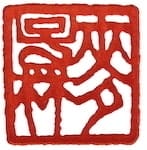In this conversation we look into how the long term effects of blood stasis can cause problems 5, 10, 20 years down the road that become baffling as the usual stuff just doesn’t work. Or makes things worse.
Listen in for how paying attention to this commonly seen problem in clinic can help you to improve clinical results and unwind some knotty problems.
- How Greg got into blood stasis
- Obvious signs of blood stasis, what to look for
- The critical importance of understanding pathomechanism
- A case study with Xue Fu Zhu Yu Tang in the treatment of PTSD
- Other signs of Blood Stagnation
- Deficiency taxation and the use of da huang si chong wan, a case for why you should not be afraid of using bugs in the treatment of blood stasis
- Learning from our mistakes
- Distinguishing a healing crisis from mistreatment
- Even when you feel like you’ve done well with a patient, take a look to see if there is something you’ve missed
Check the lower leg for signs of blood stasis: rough, dry, scaly skin, pigment spots or darkening, purple blood vessels, thickened or cracked heel, etc.
 Greg Livingston, PhD, LAc, is unique amongst Chinese medicine practitioners in the west. He completed a Chinese Medicine PhD in China, entirely in Chinese, and is one of the few westerners licensed to practice Chinese Medicine in China, where he spent over ten years in total as a student, teacher, and Chinese Medicine physician. Dr. Livingston has over 20 years of clinical experience specializing in general internal medicine with an emphasis on cardiovascular and respiratory diseases. He especially enjoys the challenge of working with individuals who have stubborn and difficult conditions.
Greg Livingston, PhD, LAc, is unique amongst Chinese medicine practitioners in the west. He completed a Chinese Medicine PhD in China, entirely in Chinese, and is one of the few westerners licensed to practice Chinese Medicine in China, where he spent over ten years in total as a student, teacher, and Chinese Medicine physician. Dr. Livingston has over 20 years of clinical experience specializing in general internal medicine with an emphasis on cardiovascular and respiratory diseases. He especially enjoys the challenge of working with individuals who have stubborn and difficult conditions.
Dr. Livingston earned his 4-year Masters in Chinese Medicine from Five Branches Institute (1997), in California, and his PhD in Clinical Chinese Medicine from Zhejiang Chinese Medicine University (2009), in Hangzhou, China. During his 10+ years in China he studied with numerous senior-level doctors, spending thousands of hours in clinic with them and seeing tens-of-thousands of patients. During the majority of this time he also practiced in local and international hospitals and clinics.
Dr. Livingston left China and relocated to Portland, Oregon in 2013. Currently he is a core faculty member at the Oregon College of Oriental Medicine (OCOM), and maintains a private practice at Root and Branch clinic in Portland’s west-side hills.
Support Qiological as a Contributing Subscriber
Links and Resources:
You can get in touch with Greg over at his website at www.drgreglivingston.com
Join the discussion!
Leave a comment on Qiological’s Facebook page.
